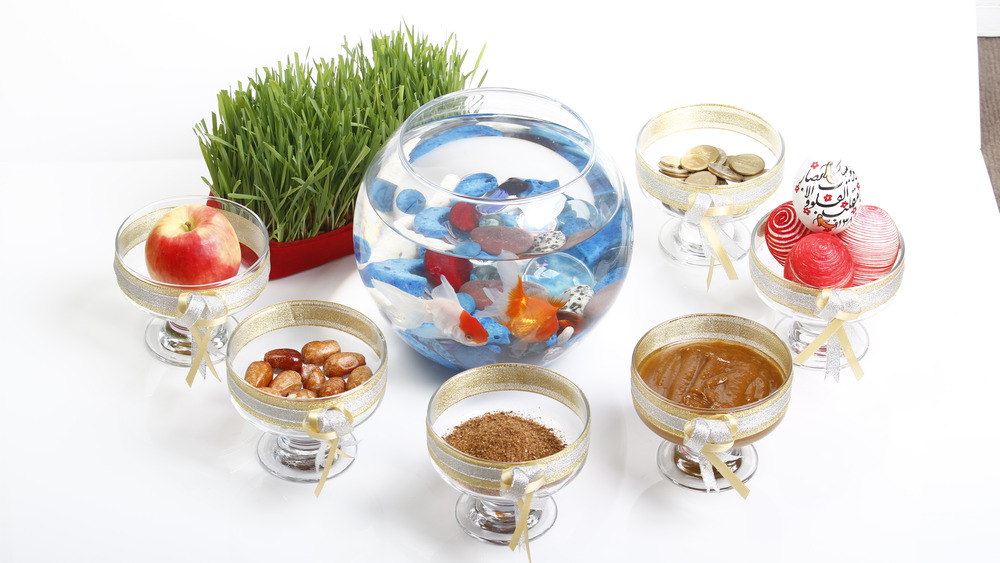The Seven S's & Nowruz
Nowruz is the Persian/Iranian name for the Iranian/Persian New Year. Its meaning combines نو noh – meaning 'new' – and روز ruz – meaning 'day.' In a Tehrani accent/Farsi dialect, the pronunciation is [noːˈɾuːz]. It is rooted in Zoroastrianism, but it is wildly celebrated in Iran and other Islamic countries despite not practicing the Zoroastrian faith. Zoroastrianism was more or less the 'original' religion of Iran, before the 7th-century Arab conquests and the 1979 Iranian Revolution. It is an ancient monotheistic religion that has traces in other major religions today (Christianity, Islam, Judaism, and even Buddhism). Because of this, the Zoroastrian roots in Nowruz can to a certain extent be seen as ancient Iranian culture.
Nowruz begins on the spring equinox (its timing is more similar to the Chinese New Year rather than the Western New year on January 1st). Every year, the exact moment at which the sun crosses the equator is calculated into a precise time, and this time marks the beginning of Nowruz.
There are many different traditions and ceremonies leading up to and during Nowruz, but that is for another cultural post. For today, I will be focusing on هفت سین (haft-sin), or the Seven S's. An example is shown below, which will be further explained.
A custom for Nowruz is to prepare a table with seven items that all being with the letter س (sin), whose closest English letter equivalent would be 's.' Here are some examples (any of these may be chosen, alongside other items listed in the paragraph below, as long as the total number of the items on the table ends up being seven):
- سبزه (sabze), sprouting grass, lentils, barley, or wheat
- سمنو (samanu), a sweet pudding made from wheat germ
- سنجد (senjed), a Persian olive
- سیب (serke), vinegar
- سیر (sib), apples
- سیر (sir), garlic
- سماق (somāq), sumac, which is a Persian spice
- سکه (sekkeh), coins
- سنبل (sonbol), a hyacinth
- ساعت (sā'at), a clock
There are other things that may be placed on the table for the Seven S's that don't necessarily start with س (sin), like the following:
- ماهی قرمز (māhi-ye qırmız), goldfish (shown in the picture above in the middle)
- تخممرغ رنگی (tokhm-e morg rangi), painted eggs (for fertility)
- آینه (āyina), a mirror (or a bowl of water)
- 'books of wisdom'
- sacred texts like the
- Quaran,
- the Avesta (the sacred text of Zoroastrianism), and the Bible,
- culturally/historically books like
- the Shānāme of Ferdowsi -- an ancient Iranian epic that I will write a cultural post on this later as it deserves its own,
- or the Divān of Hafez.
- sacred texts like the
Each item has different symbolic roots in Nowruz, please comment if you are curious about any of the items.
References
Shapur Shahbazi A, "HAFT SIN," Encyclopaedia Iranica. 1 March 2012. https://www.iranicaonline.org/articles/haft-sin
United Nations, "International Nowruz Day." https://www.un.org/en/observances/international-nowruz-day


Comments
This is a very interesting post about how the New Year is celebrated in Iran and Zoroastrianism. I have never heard of that religion before but I am intrigued that it has ties to Christianity, Judaism, and Islam. What would you say is a key difference between Zoroastrianism and the other monotheistic religions?